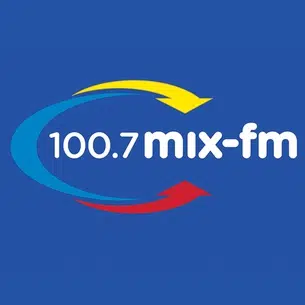VERMILLION COUNTY, Ind. (WTWO/WAWV) — Tom Harms spends a lot of time thinking about his three children.
“The kids liked to go camping, fishing and stuff like that,” Harms recalled, rocking back and forth on an outdoor lawn swing. “The day the wreck happened I was working on a guy’s car and my youngest wanted to go to the park and watch the go-kart track.”
The three Harms children, ages 17, 15 and 12, were then involved in a wreck at the intersection of State Road 63 and State Road 234. Harms said he knew it was a bad wreck before he even got to the scene.
“By the time we got there, they were cutting TJ out of the car,” Harms recalled. “My oldest daughter was laying on the seat, wasn’t even covered up. My youngest daughter was on the road covered up.”
The two Harms girls died that day, August 11, 2001, and TJ died the next day at a hospital in Indianapolis.
The wreck that killed the three Harms children was far from the last at the SR 63/SR 234 intersection. Data from the Indiana Criminal Justice Institute shows that there have been over 100 crashes at the intersection since 2000, several of which have been fatal.
The most recent fatal crash at the intersection happened on May 11, when North Vermillion High School student Cameron Cheuvront died following a wreck involving a tour bus and his vehicle.
In response to Cheuvront’s death, Vermillion County Commissioner RJ Dunavan wrote a letter to the Indiana Department of Transportation demanding action on behalf of his community.
“INDOT works for us, not the other way around,” Dunavan said. “People are frustrated, you know, we pay taxes and it seems every year INDOT just pushes us off. ‘Ah, we’ll do this’, and yet we cringe every time we hear a crash at this intersection.”
Dunavan said the community is looking for meaningful change; what does that look like in his eyes?
“Taking out the bridge to grade would help,” Dunavan said. “I ultimately think a stoplight would help. The state will say ‘we’re putting up lights to light up the intersection’, well that’s great if all the crashes happened at night, which they haven’t.”
Harms agreed that a stoplight should be installed at the intersection, and also wants the speed limit changed.
WTWO’s original coverage video and soundbites from the fatal Harms wreck:
“Before you hit the bridge, before you hit the school, it’s 55 (mph),” Harms said. “That should not be allowed.”
At this time, INDOT representatives say a stoplight can’t legally be put in at the intersection as the traffic volume doesn’t meet state requirements, even after various studies.
“Those were in 2000, 2004, 2017 and 2022,” INDOT Crawfordsville District Public Relations Director Megan DeLucenay said. “In each of those four studies, no hour at any point in the day met those minimum requirements at that intersection.”
DeLucenay explained that any time INDOT is considering putting a signal at any intersection, a signal warrant is put out. The investigation uses criteria separated into nine separate warrants from the current edition of the Indiana Manual on Traffic Control Devices. The following data was shared by INDOT regarding volume warrants for the SR 63/SR 234 intersection.
- Minimum Vehicular Volume (high volume minor road)
- 8-hour volume warrant (8 out of 24 hours required to meet) – 1 hour met
- S.R. 63 – 420 vehicles per hour required
- S.R. 234 – 105 vehicles per hour required
- 8-hour volume warrant (8 out of 24 hours required to meet) – 1 hour met
- Interruption of Continuous Traffic (high volume major road)
- 8-hour volume warrant (8 out of 24 hours required to meet) – 0 hours met
- S.R. 63 – 630 vehicles per hour required
- S.R. 234 – 53 vehicles per hour required
- 8-hour volume warrant (8 out of 24 hours required to meet) – 0 hours met
- 4-hour volume warrant (4 out of 24 hours required to meet) – 0 hours met
While DeLucenay said a stoplight is not in the plans for INDOT at this time, she did point to several alternative projects that INDOT believes will help with traffic flow.
“We’re going to put in dual LED-flashing stop signs on State Road 234 on both approaches,” DeLucenay shared. “We’re also putting in dual LED-flashing intersection warning signs on State Road 63. We’re also discussing the possibility of implementing a reduced conflict intersection.”
What changes have already been discussed at SR 63/SR 234?
State Representative Alan Morrison said talks are scheduled between several local and state leaders to take another look at the solutions INDOT has proposed.
“Before the end of this month, we will be meeting with representatives from INDOT,” Morrison shared. “From my standpoint, the times that I’ve driven through there and anyone that has, it’s going to take more than just more flashing lights. And we’ll have that conversation.”
While the talks continue between leaders at the local and state level, Harms said he just wants to prevent another family from suffering the way he and his wife have for two decades.
“It’s hard to come home to an empty house when, you know, it’s full of kids,” Harms said. “We’ve got another date coming up this August, another year being without our kids. I don’t wish that on any family, the burden that they’re going to have to go through, I mean, it’s tragic.”
Continue to follow mywabashvalley.com for coverage of the conversation surrounding the SR 63/ SR 234 intersection and proposed changes.






